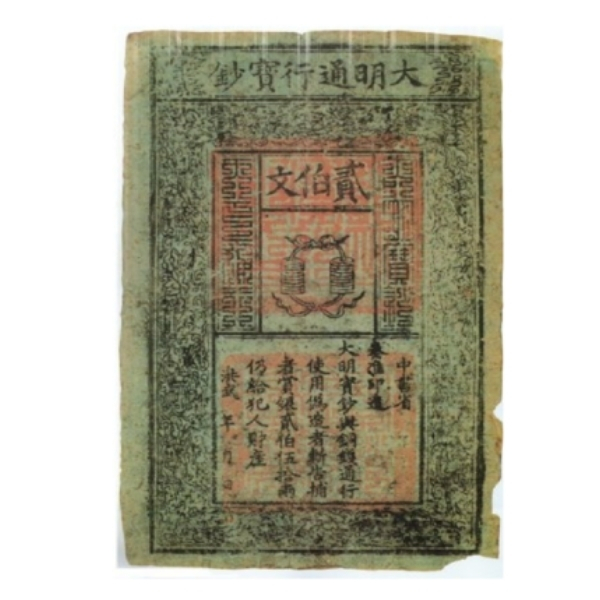Last updated on May 2nd, 2024 at 03:33 pm
Last Updated on May 2, 2024 Posted by Colonial Acres Coins
When most people think about collecting currency, coins are typically the first thing to come to mind. However, paper money’s rich and diverse past makes it popular with collectors, as well. Canadian paper money holds an especially important distinction in the history of the world’s paper money. As societies begin to consider transitioning to cashless economies, preserving and appreciating paper money is more important than ever.
Chinese Paper Money
Early societies evolved from a system of gifts and debts as the means of exchange to one in which commodities, like shells or barley, were used as money. The Chinese appear to be the first civilization to begin using tokens to symbolize various services and objects. These precursors to modern coins date back to around 770 BCE.
As the Chinese economy grew, dealing in large amounts of coins became cumbersome, especially for bankers and merchants. The Chinese government began allowing them to deposit the coins with the government in exchange for a paper receipt, which was easy to travel with and could be exchanged for an equal value of coins when they reached their destinations. These paper receipts were introduced around CE 600-700. They couldn’t be exchanged between individuals.
Sometime around CE 960-1000, China introduced the first paper money that was used much like how paper money is still used today. The paper notes, called Huizi, were printed by the government. They could be exchanged for coin-based money and used in person-to-person transactions.
Each Huizu note was around 8.5 inches by 11 inches, similar to a piece of letter-sized paper. The notes were printed using copper printing plates. They featured a landscape and images of coins and contained a printed warning against counterfeiting. They also bore red ink seals of authenticity and hand-written denominations. None of these original notes are still in existence today.

Canadian Paper Money
While China prospered with paper money for centuries, coin-based money remained the sole form of currency throughout Europe and much of the world until about the 17th century. The first paper money ever issued by a European government was in Canada.
At the time, Canada was still a French colony. It took a very long time for shipments to move between France and the Canadian colonies, and as the economy expanded, the colonists began to run out of coins. To solve the problem, the colonial government issued the first paper monetary notes, beginning in 1685. These were initially intended to serve as IOUs for coins but were soon traded among the colonists as currency. Interestingly, these first Canadian paper notes were issued on playing cards. The cards were each inscribed with a denomination and were signed by the colonial governor.
Around 1760, the British government introduced British pence, shillings, and pounds, which were the official monetary units in Canada until 1858. However, during this time, practical Canadians traded whatever currency was available. American dollars, Nova Scotia bills, Spanish dollars, and British-issued “army bills” were all widely used as paper money in Canada for roughly 100 years.
In the early 1800s, the Canadian colonies and various banking firms began printing their own paper bills, and in 1858, Canada officially replaced the pound with the dollar as the unit of currency. The Bank of Canada began issuing the first official nationwide Canadian paper money in 1870.
World Paper Money
Paper bills from around the globe offer collectors interesting and exciting finds. Because paper allows for more design flexibility than coins, these bills often feature colourful, intricate, intriguing styles and depictions, as well as various anti-counterfeiting measures that paint a complex image of the global history of money and the evolution of white-collar crime. The value of paper bills is typically based on their rarity. Limited editions, rare serial numbers, and older bills are usually the most valuable.
Colonial Acres has a vast array of paper notes from Canada and around the world that are sure to delight any collector or paper money enthusiast. Visit our site to learn more.




